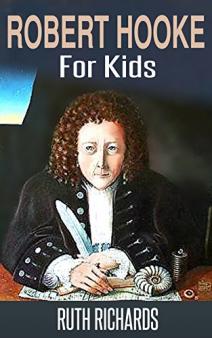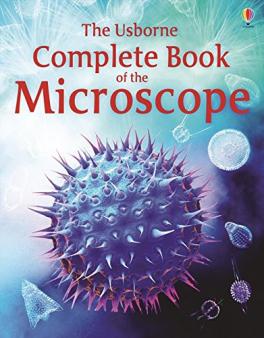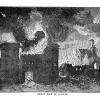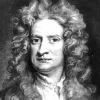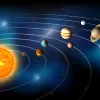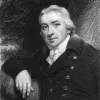Robert Hooke

Robert Hooke was a famous scientist, born in 1635. He most famously discovered the Law of Elasticity (or Hooke’s Law) and did a huge amount of work on microbiology (he published a famous book called Micrographia, which included sketches of various natural things under a microscope).
Hooke was the scientist who coined the term "cell", so we refer to the billions of tiny pieces that make up everything as cells because of him!
Hooke also studied the planets, and invented a process for telling the time accurately, as well as being an accomplished architect.
His wide ranging contributions have often been compared to those of Leonardo da Vinci, and he is referred to as a ‘polymath’ because he studied and contributed to so many subjects.
Top 10 facts
- There is a crater on the moon called the Hooke Crater, named after Robert Hooke.
- Hooke took organ lessons.
- No portraits of Hooke exist, so it is tricky to know exactly what he looked like.
- Hooke was also an architect – he made most of his money by designing buildings and was appointed Surveyor to the City of London after the Great Fire of 1666.
- Hooke discovered that cells make up every living thing.
- In 1662, Hooke became the Curator of Experiments at the Royal Society, a role he did for 40 years.
- Hooke was very good at drawing, and when he was young his father thought he might become an artist.
- Many people challenged Hooke’s drawings of things from his microscope because they couldn’t believe the bizarre way that some things appeared.
- Hooke wrote a detailed personal diary between March 1672 and May 1683.
- When Hooke discovered a honeycomb-like structure in a slice of cork using his microscope he only saw cell walls (because the cork was dead tree tissue) and he coined the term "cell" for individual compartments he saw.
Timeline
- 1635Robert Hooke is born on the 18th July in Freshwater on the Isle of Wight
- 1648Hooke’s father dies
- 1648Hooke attends Westminster School in London
- 1653Hooke studies at Christ Church College, Oxford University
- 1655Hooke starts working for the scientist Robert Boyle
- 1660Hooke discovers ‘Hooke’s Law’
- 1660Hooke invents the balance spring
- 1662Hooke becomes Curator of Experiments at the Royal Society
- 1663Hooke becomes a fellow of the Royal Society
- 1665Micrographia is published
- 1665Hooke becomes Professor of Geometry at Gresham College in London
- 1666Hooke becomes Surveyor of the City of London
- 1667Lectures of Spring is published
- 1703Hooke dies on the 3rd March, aged 67, in London


Boost Your Child's Learning Today!
- Start your child on a tailored learning programme
- Get weekly English & maths resources sent direct to your inbox
- Keep your child's learning on track
Did you know?
- As an architect, Hooke designed many of the new buildings to be built after the Great Fire of London in 1666, although his grid plan for the overall rebuilding of the city was rejected. Hooke designed the monument to the Great Fire which still stands in London today, and it is also thought that he was the main designer of the Royal Observatory in Greenwich.
- Hooke improved the accuracy of his microscope by adding in a screw focus mechanism as well as a light source. Before this, in order to focus something under a microscope people had to move the item being looked at until they could see it properly.
- Hooke had a very famous feud with the scientist Sir Isaac Newton about gravity – Hooke felt that Newton didn’t give him the recognition he deserved for his work on gravity. Hooke was in fact considered to be quite grumpy and was described as a ‘difficult’ person to be around.
- Hooke contributed to a range of scientific fields, including insect flight, the properties of gases, and understanding of respiration (or breathing). He also designed the air pumps for Robert Boyle’s experiment that led to the discovery of Boyle’s Law.
- Other scientific discoveries that Hooke uncovered include: refraction (he suggested the wave theory of light); the fact that matter (stuff) expands when it is warmed up; and the understanding that the air we breathe is formed of tiny particles with large gaps between them.
- Although Hooke didn’t actually design the Gregorian Telescope (that was down to a man called James Gregory), he was the first person to build one (Gregory couldn’t get hold of good enough mirrors). A Gregorian telescope uses two mirrors to reflect light in a tube which in turn creates a magnified image.
- In Micrographia, Hooke explained the importance of the microscope for science: "By the help of microscopes, there is nothing so small, as to escape our inquiry; hence there is a new visible world discovered to the understanding."
Look through the gallery below and see if you can spot the following:
- The monument to the Great Fire of London
- A microscope
- Cells under a microscope
- Greenwich Observatory
- The solar system
Gallery
About
Robert Hooke was born on the 18th July 1635 in Freshwater on the Isle of Wight. He was one of four children. His father died in 1648, leaving Hooke £40 (a lot of money at the time). He moved to London to be a painter’s apprentice, but he soon left the apprenticeship and instead attended Westminster School. In 1653 Hooke went to Oxford University to study experimental science.
In 1655 Hooke began working for the scientist Robert Boyle. He was asked to design and make special air pumps for one of Boyle’s experiments, which eventually led to the discovery of Boyle’s Law. He worked with Boyle for seven years and afterwards, in 1662, at the age of 27, became the Curator of Experiments at the Royal Society. Hooke was elected to the position of ‘fellow’ of the Royal Society in 1663.
Hooke worked in a wide range of scientific fields, including microbiology, physics and geometry, as well as being a very accomplished architect. He is most famous for his work on elasticity (which led to the discovery of Hooke’s Law) and on microscopy and astronomy.
In 1965, Hooke published a book called Micrographia, which became a hugely successful publication. Micrographia means ‘small drawings’ and included many sketches of things Hooke had seen through his microscope, such as a flea, snow, mold and cork. Many people were not convinced by his sketches as they thought it all looked too strange to be real! His work on microbiology (looking at microscopic organisms) led to his description of cells being part of every living thing. This discovery also led Hooke to (correctly) suggest that fossils were the remains of things that had once been alive.
In 1678 Hooke published ‘Lectures of Spring’, in which he included his discovery of the ‘law of elasticity’, known as Hooke’s Law, which states that ‘the extension of a spring is proportional to the force applied to it’.
Hooke made many observations and discoveries about planets, including that Jupiter spins around on its axis and he first noticed its Great Red Spot. He also did many drawings of Mars and suggested that the moon and Earth orbited the sun in an ellipse (although he never managed to prove this theory). He used a Gregorian Telescope to make these observations, which he first built in 1674. He continued to improve his telescope and invented the universal joint to help adjust it.
Hooke also had a profound impact on the accurate timekeeping of clocks. In 1657 he invented a special cog (called an anchor escapement) that gave a gentle push on the swing of a pendulum, each time it swung. This stopped the pendulum from slowing down over time. Hooke also invented the balance spring (in 1660) which helped pocket watches keep accurate time as well.
On top of being a successful scientist, Hooke was also a well-respected architect. He designed many buildings, although few remain today, and was heavily involved in the rebuilding of London after the Great Fire of 1666. He held the position of Surveyor to the City of London. It was Hooke’s architectural work that made him a wealthy man.
Robert Hooke died in London on March 3, 1703. He was 67 years old.
Words to know
Architect - a person who designs buildings and structures
Cell - the smallest structure of a living thing
Compound microscope - a microscope that uses two lenses (the objective lens and the eyepiece) to magnify an image
Crater - a large rounded hole found on the surface of celestial objects (like a moon or planet) which have usually been formed by a meteorite hitting the surface
Elasticity - The ability of something to return to its original form after being stretched or squashed
Gravity - the force from a planet or other celestial body, that pulls things towards it
Gregorian telescope - a telescope that uses two mirrors to reflect light in a tube in order to create a magnified image
Hooke’s Law - ‘the extension of a spring is proportional to the force applied to it’
Microbiology - the study of microscopic organisms
Polymath - someone who has in depth knowledge of many different subjects
Universal hook - a mechanical joint that through rotation allows different parts of a machine to move freely
Related Videos
Just for fun...
- Have a look at photographs of some strange and beautiful things under the microscope
- Make your own microscope
- Look at some everyday things under a microscope and see if you can draw them
Children's books about microscopes and Robert Hooke
Find out more
- A children's introduction to Robert Hooke from DKfindout!
- Learn more about Robert Hooke
- Find out about Robert Hooke the natural philosopher
- The Royal Observatory describes Hooke and his work
- The Science Museum talks about Hooke as a cell scientist
- Hooke played a big part in the reconstruction of London after the Great Fire of 1666
- Learn more about Hooke’s Law
- See some of the amazing drawings Hooke published in 1665
See for yourself
- Visit the Greenwich Observatory in London to learn more about Hooke and see some Hooke-related artefacts
- Visit the Science Museum in London to find out more about Robert Hooke
- Learn more about Hooke from this BBC video
- Visit a planetarium and experience the night sky that Hooke explored
- Visit the Monument to the Great Fire of London
Also see

Give your child a headstart
- FREE articles & expert information
- FREE resources & activities
- FREE homework help





